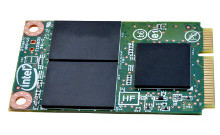No, magnets will not damage solid-state drives. However, changes in magnetic fields might cause data loss under certain circumstances.

Strong magnetic fields can destroy data on hard disk drives (HDDs) and data tapes, for a simple reason: Those devices use magnetism to store data. Disrupting those charges will, necessarily, cause data loss.
Many professional data recovery laboratories purposely use magnets to securely erase data. Degaussing is a process that applies strong magnetic fields to magnetized media, rendering them blank (and completely unusable, since the magnets also destroy the data that hard drives use for startup).
This isn’t effective for solid-state drives (SSDs), flash drives, and other flash-based media. SSDs and other NAND flash devices use floating-gate transistors to store data — not magnetic charges.
Since they store data without relying on magnetic charges, you could theoretically place a strong magnet right next to your SSD without losing data (but as we’ll explain in a moment, you should not try this).
The bottom line: Degaussing is not an acceptable form of secure media destruction for NAND media. However, before you place your favorite rare earth magnet next to your computer, read on.
Changes in magnetic fields can affect any electronic device.
A strong magnetic field can destroy a hard drive’s data, but doesn’t pose a realistic danger for an SSD.
However, the rate at which a magnetic field changes can introduce some issues. This rate of change is called the magnetic flux: the number of magnetic field lines that pass through a closed surface.
Introducing a strong magnet can create small voltages, which may travel over electronic circuits and cause damage. To damage an SSD, you would need a tremendous change in magnetic flux — and that’s one of the many, many reasons that you shouldn’t bring your SSD into an MRI machine.
Realistically, you could probably place strong magnets near your SSD without causing any issues. But even with professional degaussing equipment, you should not rely on magnetism alone to securely destroy files on an SSD.
Related: The Dangers Of DIY Data Destruction
How can I securely destroy my SSD?
The simplest way to destroy an SSD is to physically shred it. Commercial shredders can certainly handle electronic media — but they’re expensive, and shredding your drive can create environmental hazards.
You can also disassemble your SSD and pry out the memory chips that store the data, then destroy them. This is a time-consuming process, but it’s certainly secure.
For home and office computer users, there’s an easier way to handle data sanitization: Format the SSD. After the drive completes a TRIM operation, data is irreversibly destroyed. You can also encrypt the SSD, which may be a more realistic option if you’d eventually like to restore the data.
Related: Solid-State Drive (SSD) Data Recovery: Are My Files Lost Forever?
Before intentionally destroying data, make sure you’re prepared for the consequences.
If your SSD isn’t functioning as expected and you simply want to sanitize the data before recycling it, formatting (or removing the NAND memory chips) is an appropriate option.
However, if your organization must follow certain standards for data sanitization, we strongly recommend working with experts. A simple format isn’t sufficient for meeting the NIST’s Guidelines for Media Sanitization, and physically destroying the device — while sufficient for sanitization — may cause compliance issues if you fail to keep appropriate documentation.
Datarecovery.com provides extensive services for data sanitization, storage media disposal, and data recovery. To learn more, submit a case online or call us at 1-800-237-4200 to speak with an expert.




